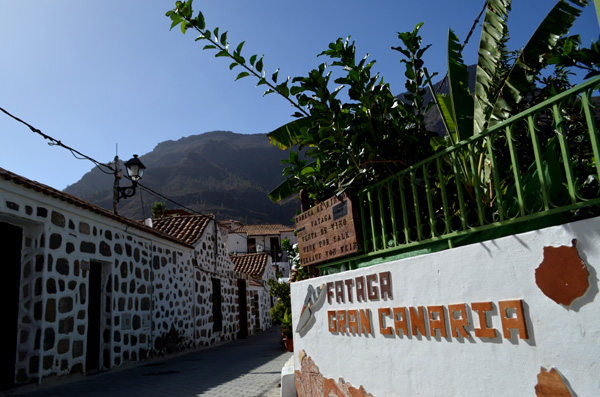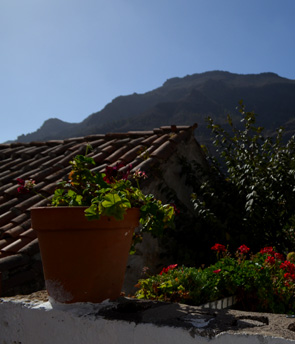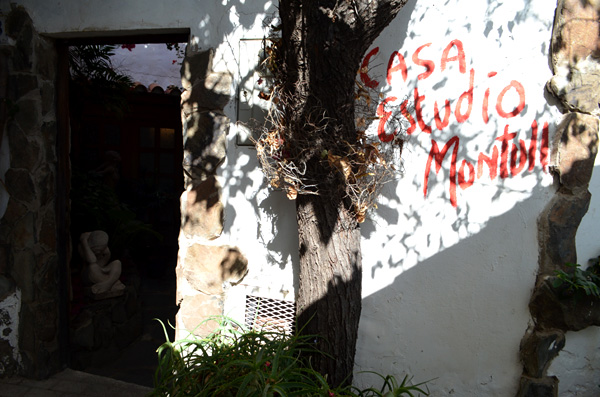Today we are here to talk to your about the village of Fataga, a small settlement of white colour houses, hidden away from the usual noise at the south of Gran Canaria.

Travelling explorers will see on their way round that Gran Canaria is not known for one common urbanistic style. Although the typical picture of postcard of the island doesn’t normally feature whitewashed villages, there are a fair few of them around. Fataga, a town in the municipality of San Bartolomé de Tirajana, is one of the places we recommend you make the effort to visit.
Visitors coming here will be greeted by the green Valley of Fataga, a sumptuous garden of pine trees, a striking contrast to the peaceful and delicious spot made up of the well preserved little whitewashed village houses. These houses line narrow little streets that cross-cross the centre, adorned by a plethora of colourful flowers.

Fataga is a hamlet of bright walls and welcoming tiled roofs, and narrow pebbled streets. It also features tiny family orchard allotments, with flowers in the windows and on the side of pavements, and on hanging on low walls. It is a pleasant spot for strolling along, alongside water irrigation channels, as you while away the time listening to the tinkling of water and the ringing of the church bells.
It is also just fifteen kilometres from the major tourist hotspots at the south of Gran Canaria, yet a world away from their hustle and bustle. This little village is just a stone’s throw away, conserving as it does Gran Canaria rural architecture, painstakingly mantaining local tradition and identity. The whiteness of its houses shine brightly on sunny days.
If we stroll around the streets of Fataga, on the left hand side of Plaza de San José, and look up at the summit, we may just pass by the study of sculptor Luis Alemán Montull (born Las Palmas de Gran Canaria in 1931), the author of Primitive Canary Activities, the first and most representative great work by the artist, located right at the heart of the island’s capital city on the roundabout at the La Plaza de España.
Right in the Plaza de San José, in Fataga, we can see another of Montull’s works, namely the Tribute Monument to Craftswomen. Those who know him say it is a delight to talk to him, and the door to his house is usually open.

The hamlet is set in the ravine of Fataga, and is surrounded by amazing steep cliffs. It is 58 kilometres from the city of Las Palmas de Gran Canaria and stands at an average height of 730 metres above sea level. It reaches its highest point at Talayón del Risco de Amurga (1,126 m. altitude), while its deepest descent takes us down to the great flat plateau of Maspalomas, which opens out in the ravine together with its four tributaries. The only populated area is the town of Fataga itself and its immediate surroundings.
Of the nineteen main ravines that cut through Gran Canaria from the summit down to the sea, Fataga Ravine is the second largest on the island in terms of surface area, some 140 Km2, although in this case, the basins of Tirajana and Arguineguín and a mountain chain prevent the ravine reaching the middle of the island.
The area represents a perfect place for hiking enthusiasts, due to the many footpaths that cross the ravines, as they reveal endless secrets to those walking along them, secrets that are reserved only for intrepid explorers. If you need any further clues, we have a few more for you on the following link.
The distance separating Las Palmas de Gran Canaria and Fataga is 70 Km, and takes approximately an hour and a half by car. From the capital, take the GC-1 motorway towards Maspalomas, and once there, take the GC-60.